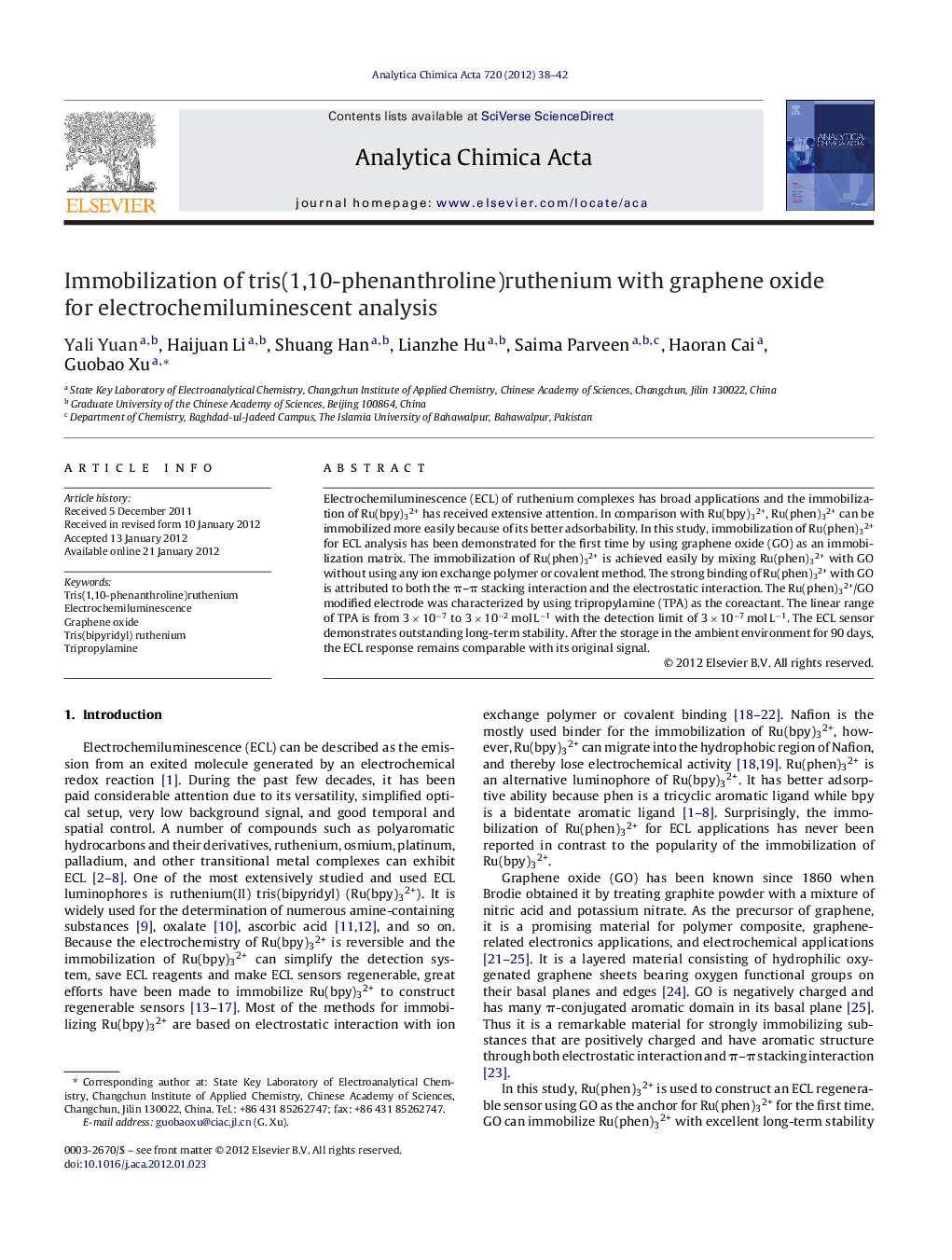| Article ID | Journal | Published Year | Pages | File Type |
|---|---|---|---|---|
| 1165763 | Analytica Chimica Acta | 2012 | 5 Pages |
Electrochemiluminescence (ECL) of ruthenium complexes has broad applications and the immobilization of Ru(bpy)32+ has received extensive attention. In comparison with Ru(bpy)32+, Ru(phen)32+ can be immobilized more easily because of its better adsorbability. In this study, immobilization of Ru(phen)32+ for ECL analysis has been demonstrated for the first time by using graphene oxide (GO) as an immobilization matrix. The immobilization of Ru(phen)32+ is achieved easily by mixing Ru(phen)32+ with GO without using any ion exchange polymer or covalent method. The strong binding of Ru(phen)32+ with GO is attributed to both the π–π stacking interaction and the electrostatic interaction. The Ru(phen)32+/GO modified electrode was characterized by using tripropylamine (TPA) as the coreactant. The linear range of TPA is from 3 × 10−7 to 3 × 10−2 mol L−1 with the detection limit of 3 × 10−7 mol L−1. The ECL sensor demonstrates outstanding long-term stability. After the storage in the ambient environment for 90 days, the ECL response remains comparable with its original signal.
Graphical abstractFigure optionsDownload full-size imageDownload as PowerPoint slideHighlights► Ru(phen)32+-based regenerable ECL sensor has been demonstrated for the first time. ► Ru(phen)32+ has better adsorbability than Ru(bpy)32+. ► Ru(phen)32+ is readily and strongly immobilized on graphene oxide by adsorption. ► Ru(phen)32+/GO regenerable sensor has excellent long-term stability. ► Ru(phen)32+ is an attractive alternative to Ru(bpy)32+ for regenerable ECL sensors.
